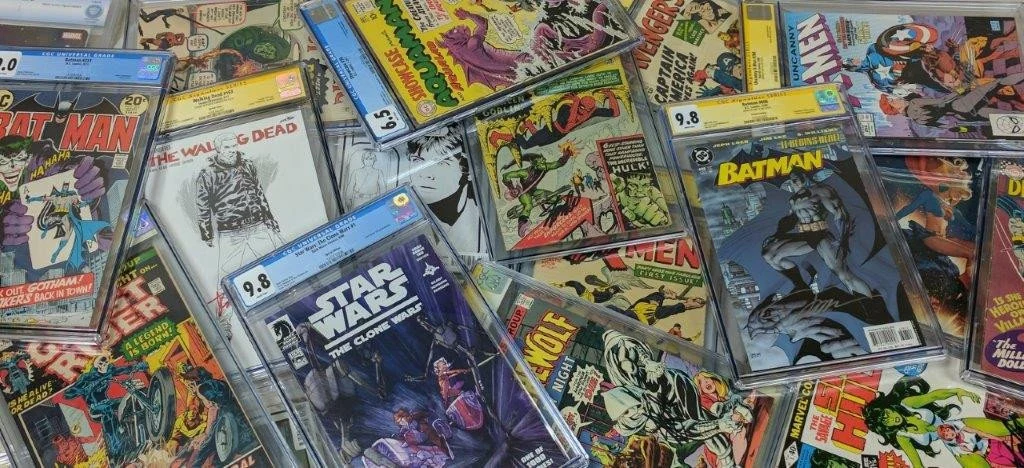Collecting is a passion that brings joy and fulfillment to enthusiasts around the world. Whether it’s rare coins, vintage toys, or sports memorabilia, many collectors face a crucial decision – should they have their collectibles professionally graded? Grading, a process that evaluates an item’s condition and authenticity, comes with its share of pros and cons. We’ll explore the advantages and disadvantages of grading collectibles to help you make an informed decision.
Pros of Grading Collectibles:
1. Authenticity Assurance:
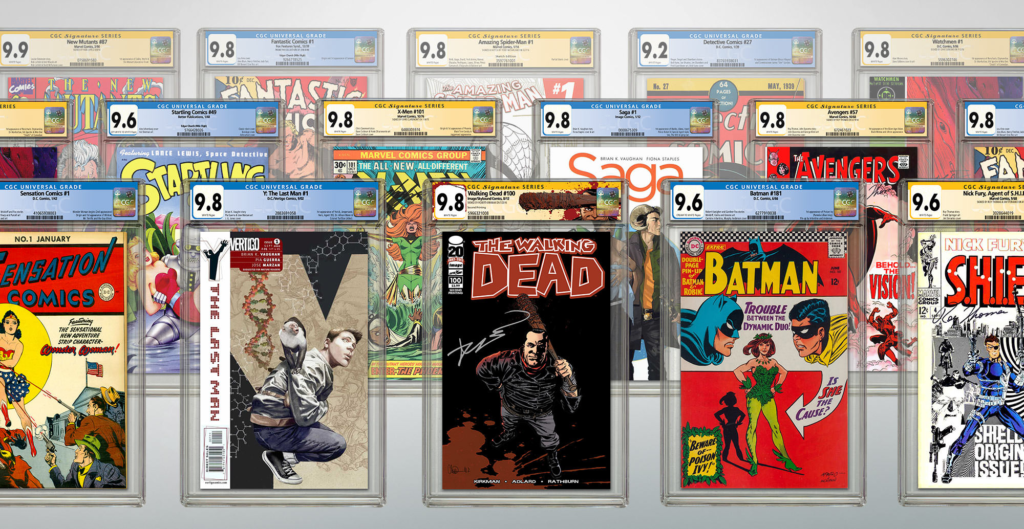
Grading services offer collectors and enthusiasts a crucial advantage through their rigorous authentication processes. The assurance of authenticity provided by these services is paramount, particularly in markets where counterfeit or replica items are prevalent. Grading companies employ experts who have in-depth knowledge and experience in assessing the authenticity of collectibles, whether they are rare coins, comic books, video games, or trading cards.
These experts follow strict and standardized protocols to scrutinize every aspect of an item, from its physical attributes to its historical context and provenance. For example, in the case of comic books, they meticulously examine factors such as the paper quality, print quality, cover integrity, and even the presence of restoration or repairs. In the world of video games, experts evaluate factors like the condition of the cartridge or disc, label quality, and whether the game is a legitimate release.
The benefit of this rigorous authentication process is twofold. First, collectors and buyers can have confidence that the item they are acquiring is indeed genuine, reducing the risk of falling victim to counterfeit schemes or unknowingly purchasing replica collectibles. This assurance is especially critical in high-value markets where the stakes are substantial.
Second, the authentication process carried out by grading companies helps establish a clear and verifiable record of the item’s authenticity. This record can be invaluable for provenance documentation, resale value, and historical significance. Collectors often prefer graded items because they come with a certificate of authenticity, which provides a tangible guarantee of the item’s genuine nature.
2. Standardized Evaluation:
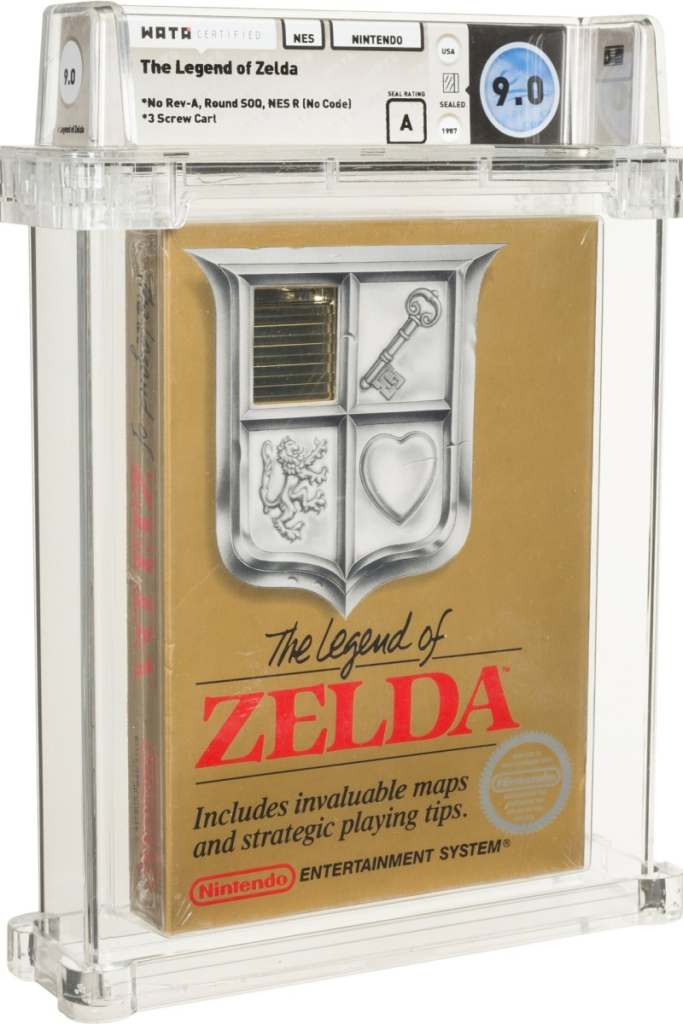
Professional grading services play a pivotal role in the world of collectibles by introducing a standardized scale for assessing the condition of these items. This standardized scale serves as a universal language that collectors, buyers, and sellers can rely on to describe and understand the quality of collectibles accurately. This uniformity significantly enhances communication within the collectibles market and contributes to a smoother and more transparent exchange process.
The standardized scale typically used by grading services involves assigning a numerical grade or rating to an item based on its condition. This grade often ranges from poor or heavily damaged (the lowest) to mint or pristine (the highest). The specific grading criteria can vary depending on the type of collectible, but they are consistently applied by experts within the grading industry.
One of the primary benefits of this standardized grading scale is its ability to reduce misunderstandings and disputes among collectors and market participants. Without a common grading system, individuals might have differing opinions on what constitutes a “good” or “excellent” condition for a collectible item. This lack of agreement could lead to confusion, disagreements, and ultimately hinder the buying and selling process.
However, when a collectible item is professionally graded, it receives an objective assessment by experts who follow established grading criteria. This means that if an item is graded as “mint” by one grading service, collectors and buyers can reasonably expect it to be in exceptional condition, regardless of where it is sold or who assesses it.
Moreover, the standardized grading scale creates a clear and consistent record of a collectible’s condition. This record is valuable for collectors and investors as it allows them to track the quality of their assets over time. It also facilitates fair pricing based on the item’s condition, ensuring that buyers pay a fair market value for the quality they receive.
3. Enhanced Value:

Obtaining a high-grade certification from a well-respected grading authority can have a profound impact on the value of a collectible, making it an attractive proposition for both investors and collectors alike. This phenomenon is driven by several key factors that underscore the significance of professional grading in the collectibles market.
- Assurance of Quality: When a collectible receives a high-grade certification, it provides a level of assurance regarding its condition that is hard to achieve through subjective assessments. Collectors and investors can trust that the item has been thoroughly evaluated by experts and has met strict criteria for quality.
- Comparative Benchmark: Grading serves as a comparative benchmark that helps potential buyers quickly gauge the condition of an item. A graded collectible with a high grade, such as “mint” or “near mint,” instantly communicates its superior quality to potential buyers. This transparency simplifies the decision-making process and attracts buyers seeking premium items.
- Reduced Risk: Investors are often willing to pay a premium for graded collectibles because it reduces their exposure to risk. They can confidently invest in high-grade items, knowing that they are less likely to encounter hidden flaws, repairs, or counterfeit issues that could devalue the collectible.
- Market Demand: The collectibles market has a strong demand for high-quality, professionally graded items. Collectors are passionate about acquiring the best specimens for their collections, and investors seek assets with potential for appreciation. Consequently, high-grade certified collectibles are highly sought after and can command premium prices.
- Preservation of Value: Graded collectibles, especially those in top-notch condition, tend to retain their value over time. They are less susceptible to wear, damage, or deterioration, making them a stable store of value. This appeals to both collectors who want to protect their investments and investors looking for long-term potential.
- Historical Significance: Some graded collectibles have historical significance or are tied to iconic moments in their respective niches. This adds another layer of value as collectors and enthusiasts are often drawn to items with compelling stories or connections to famous events.
- Access to a Wider Market: High-grade certification can open doors to a broader market. Collectors and investors may be more willing to participate in auctions, consignment sales, or online marketplaces to acquire graded items, thus increasing the potential number of interested buyers.
4. Preservation:

Grading companies have developed a practice of encapsulating or sealing collectibles in protective cases, and this approach brings several significant advantages to both collectors and investors in the world of collectibles. These protective cases, often made of high-quality materials, serve as a safeguard against environmental factors and minimize handling-related wear and tear, contributing to the preservation of the collectible’s condition and overall value.
- Protection from Environmental Factors: Encapsulating collectibles provides a protective barrier that shields them from various environmental hazards. This includes protection against dust, moisture, UV radiation, and pollutants, all of which can lead to deterioration, discoloration, or damage over time. By encapsulating the collectible, grading companies help ensure its long-term preservation and maintain its original quality.
- Preventing Physical Contact: Handling collectibles, especially those made of delicate materials like paper, can result in unintended damage or wear. By sealing collectibles in protective cases, grading companies reduce the need for direct handling, minimizing the risk of fingerprints, creases, or other physical defects that can occur during routine examination or display.
- Tamper-Evident Features: Many protective cases used by grading companies are designed with tamper-evident features, such as seals or labels that show visible signs if someone attempts to open the case. This tamper resistance enhances the security of the collectible, ensuring that its certified condition remains intact and preventing unauthorized access.
- Standardized Presentation: Encapsulated collectibles are presented in a standardized and professional manner. The cases typically include labels with essential information about the collectible, such as its grade, certification number, and sometimes a description. This standardized presentation enhances the collectible’s marketability and provides potential buyers with a clear understanding of its quality.
- Facilitating Storage and Display: Protective cases are designed to be stackable and easily stored in collections or safe deposit boxes. They also have built-in features for hanging or displaying the collectible, making it convenient for collectors to showcase their treasures without exposing them to unnecessary risks.
- Resale and Authentication: Encapsulated collectibles are readily accepted in the secondary market, as they come with a trusted certification of their condition. This makes them easier to sell or trade, and potential buyers can have confidence in the quality and authenticity of the item.
- Long-Term Value Preservation: Collectibles that are encapsulated and protected tend to maintain their condition and value over time. This is especially valuable for investors who aim to preserve and potentially appreciate the value of their assets.
5. Peace of Mind:

Grading offers collectors a profound sense of peace of mind, and this assurance stems from several critical aspects of the grading process. When your valuable collectibles have been meticulously assessed by experts, it alleviates concerns about their condition, authenticity, and overall value. Here’s an exploration of why grading provides this peace of mind to collectors:
- Expert Evaluation: Grading is conducted by seasoned experts who possess in-depth knowledge and experience in their respective fields, whether it’s coins, comic books, video games, or trading cards. These experts apply strict, standardized criteria to evaluate every aspect of the collectible, ensuring an accurate assessment of its condition and authenticity.
- Objective Assessment: The grading process is based on objective standards that are consistently applied across the industry. This objectivity minimizes the potential for subjective biases or conflicts of interest, providing collectors with a trustworthy and impartial evaluation.
- Authentication: Grading services not only assess the condition of collectibles but also authenticate their origin and legitimacy. This is especially crucial in markets where counterfeit or replica items are prevalent. Collectors can rest assured that the graded item is indeed genuine, reducing the risk of falling victim to fraud.
- Standardized Grading Scale: Grading companies use a standardized grading scale to assign a numerical or descriptive grade to each collectible. This grade clearly communicates the item’s quality, making it easier for collectors to understand and compare the condition of different items.
- Protection from Damage: Graded collectibles are often encapsulated or sealed in protective cases. This safeguard shields them from environmental factors, handling, and tampering, ensuring that the item’s condition remains intact over time.
- Certification Documentation: Grading companies issue certification documentation that includes details about the collectible, such as its grade, certification number, and a description of any notable features or defects. This documentation serves as a valuable record of the collectible’s quality and authenticity.
- Market Recognition: Collectors and buyers in the market recognize and trust graded items. Graded collectibles are often more liquid and easier to sell, as they come with a recognized certification of their condition and authenticity.
- Investment Confidence: For collectors who view their collectibles as investments, graded items provide confidence in the long-term value of their assets. The certification and protection offered by grading can enhance the potential for future appreciation.
Cons of Grading Collectibles:
1. Cost:

(Example)
The cost associated with grading services is an important consideration for collectors, as it can significantly impact the overall value proposition of having their collectibles professionally assessed. The price for grading services can vary widely, ranging from just a few dollars to a substantial percentage of the item’s estimated value. This cost factor introduces a nuanced decision-making process, especially when dealing with less valuable items, where grading costs might outweigh the potential increase in value. Here’s a closer look at this complex issue:
- Cost Structure: Grading services typically have a tiered fee structure that takes into account the estimated value of the item being graded. Higher-value items often incur higher grading fees. The grading process may also offer options for expedited services, special labels, or additional documentation, each of which can come with its own associated costs.
- Economic Viability: Collectors must weigh the grading cost against the potential increase in the item’s value. For high-value or rare collectibles, the added value and marketability that come with a professional grade can easily outweigh the grading fee. In these cases, collectors often view grading as a worthwhile investment.
- Market Demand: Consideration should be given to whether the collectible has a strong demand in the graded condition. For items that are highly sought after in top-quality condition, the cost of grading can be justified by the premium price such items command in the market.
- Collectors’ Goals: The goals and intentions of the collector play a significant role. Some collectors may prioritize the preservation and protection of their collectibles, valuing the security and peace of mind that grading provides over potential financial gains. Others may be primarily focused on investment and seek the highest possible return on their graded items.
- Threshold Values: Collectors often establish threshold values below which they may not find grading economically feasible. For less valuable items, the grading cost may simply not justify the expected increase in value, especially if the item is unlikely to sell for a significant premium in graded condition.
- Long-Term Perspective: Collectors who take a long-term perspective may be more willing to invest in grading even for items of modest value. They may anticipate that the collectible’s value will appreciate over time, and having it professionally graded can help preserve and enhance its condition and marketability.
- Passion and Personal Satisfaction: Some collectors are driven by a deep passion for their hobbies and derive personal satisfaction from owning graded collectibles, regardless of the financial considerations. For them, grading can enhance their enjoyment and connection to their collections.
2. Subjectivity:
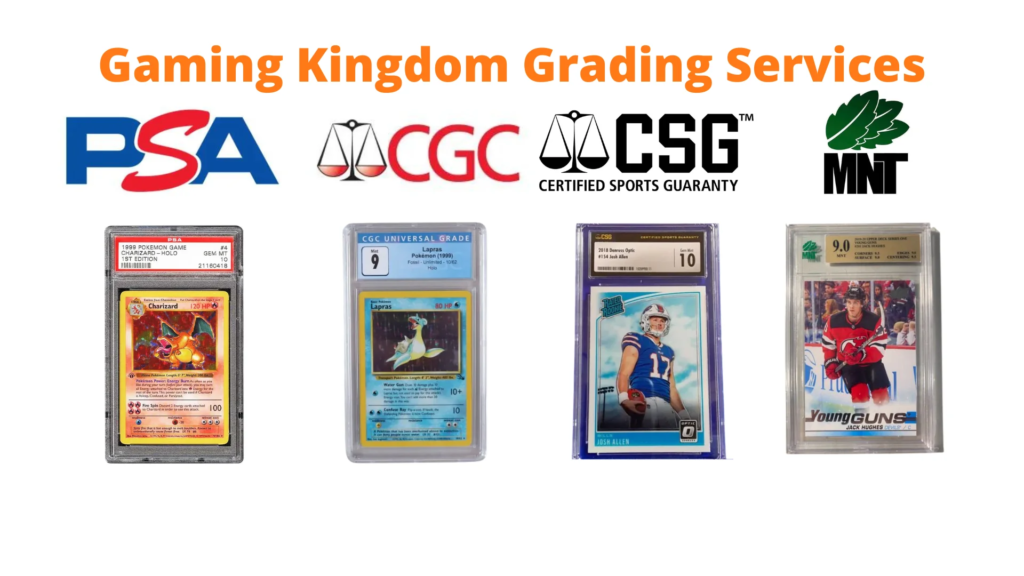
Grading, despite its aim to provide an objective evaluation, indeed carries an inherent element of subjectivity. This subjectivity arises from several factors, including variations in grading standards, the expertise of individual graders, and the potential for differences in opinion among different grading companies. Collectors and market participants should be aware of these nuances in the grading process. Here’s a deeper exploration of these aspects:
- Grading Standards: While there are industry-standard grading scales and criteria, variations may exist among different grading companies. Some companies might have slightly different definitions or interpretations of specific grades, leading to discrepancies in how they assess the same item. These variations can be subtle but may influence the final grade assigned to a collectible.
- Expertise of Graders: The quality of grading can depend on the expertise and experience of the individual graders. Even within the same grading company, different graders may have varying levels of experience or specific areas of expertise. This can lead to differences in how they perceive and evaluate the condition of an item.
- Subjective Factors: Some aspects of grading involve subjective judgment. For example, determining the extent of wear or the presence of flaws, such as creases or minor imperfections, can be somewhat subjective. Graders rely on their training and experience to make these assessments, but there can still be room for differing opinions.
- Item Variation: Collectibles can vary widely in terms of materials, age, and manufacturing processes. Grading companies may adjust their criteria to account for these differences, but there can still be challenges in applying a single grading standard uniformly across all types of collectibles.
- Market Trends: Grading companies may consider market trends and collector preferences when assessing certain items. This can introduce an element of subjectivity, as market dynamics and collector sentiment can change over time.
- Quality Control: Grading companies strive to maintain consistency in their assessments through rigorous quality control measures. However, occasional inconsistencies may still occur due to the factors mentioned above.
Given these potential sources of subjectivity, collectors and investors should approach grading with a balanced perspective:
- Use Reputable Graders: Opt for well-established grading companies with a history of reliability and consistency. Research the reputation and reviews of grading services to ensure they have a track record of accuracy.
- Consider Multiple Opinions: If you have doubts about a collectible’s grade, you can seek opinions from multiple grading companies or experts to gain a broader perspective. Some collectors choose to have items regraded by different companies for validation.
- Understand the Grading Process: Familiarize yourself with the grading process and criteria for the specific type of collectible you are interested in. This knowledge can help you better interpret and assess graded items.
- Factor in Subjectivity: Recognize that while grading aims to be objective, there will always be an element of subjectivity. Consider this when making purchasing decisions and be mindful of the potential for variations in grade interpretations.
3. Irreversible Process:
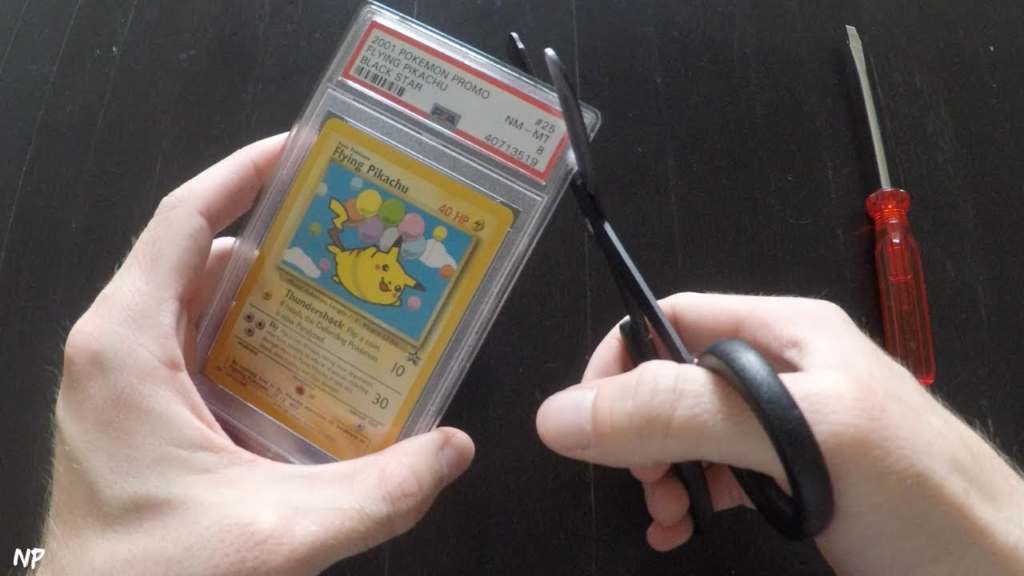
Once an item is graded and encapsulated, it becomes difficult to examine or enjoy its details up close. This might be disappointing for collectors who appreciate the tactile experience of handling their collectibles.
4. Limited Applicability:

Grading is not suitable for all types of collectibles. Some items, such as vintage posters or original artwork, may not fit well within the standard grading process.
5. Time Delay:

(Example)
Submitting collectibles for grading often comes with the trade-off of a waiting period before you receive the graded item back. This delay can be a crucial consideration, as it may not be suitable for all collectors, especially those who have a preference for immediate access to their items. Let’s delve deeper into the reasons for this waiting period and how it can impact collectors:
- Thorough Evaluation: The primary reason for the waiting period is the thoroughness of the grading process. Grading companies employ experts who meticulously examine each collectible, assessing its condition, authenticity, and other relevant factors. This in-depth evaluation takes time to ensure accuracy and consistency in the final grade assigned.
- Volume of Submissions: Grading companies often receive a high volume of submissions, especially during peak times or for popular collectibles. The influx of submissions can lead to processing delays as the grading service works through their queue.
- Custom Labels and Services: Some collectors may opt for custom labels or additional services, such as autograph authentication or special packaging. These services can add extra processing time, as they require additional attention and customization.
- Shipping and Handling: The process includes shipping the collectibles to and from the grading service, which adds to the overall turnaround time. Collectors should factor in the time it takes for their items to reach the grading company and then be shipped back.
- Quality Control: Grading companies have stringent quality control measures to ensure accuracy and prevent errors. This may include multiple graders reviewing the same item, which can take extra time but helps maintain the integrity of the grading process.
- Expedited Services: Some grading companies offer expedited services for an additional fee, which can significantly reduce the waiting period. However, these expedited options come at a premium and may not be suitable for all budgets.
Grading collectibles can be a valuable tool for collectors and investors, offering authenticity assurance, standardized evaluation, and potentially increased value. However, it’s essential to weigh these advantages against the costs, subjectivity, and potential limitations of the grading process. Ultimately, the decision to grade your collectibles should align with your collecting goals, the nature of your items, and your budget. Carefully consider the pros and cons to make an informed choice that enhances your collecting experience.

